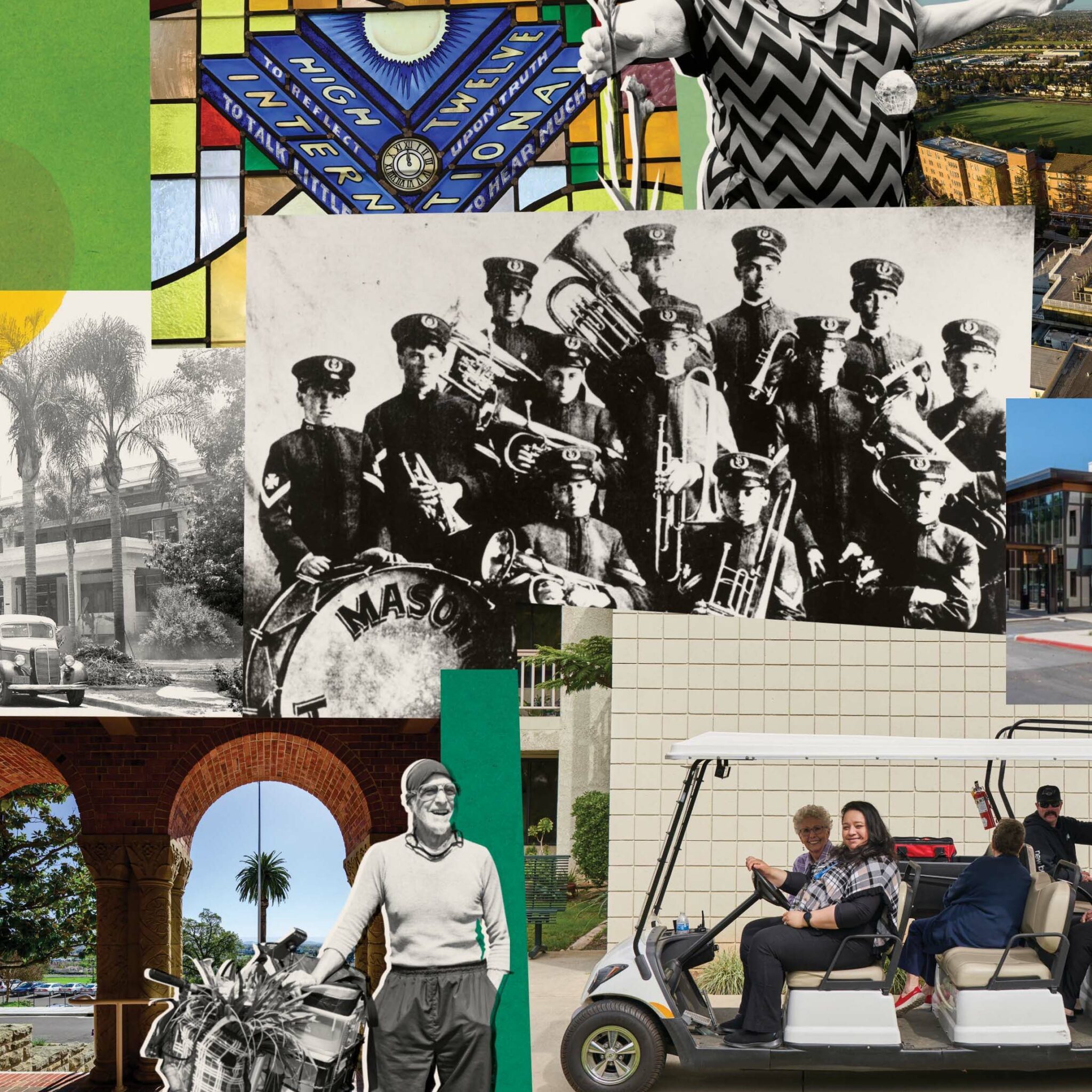
The Masonic Homes at 125: An Ever-Changing Haven
The Masonic Homes of California evolved from a 19th century widows and orphans home into an innovative apparatus of care and relief.

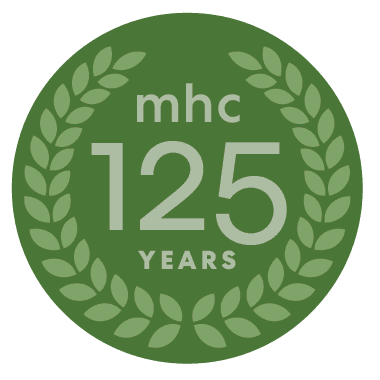
By Ian A. Stewart
The first thing David Goldstein noticed when he arrived at Michael’s door was the smell of gas. Michael was in his eighties and living alone in a small apartment in New England that was paid for through a Veterans Affairs housing voucher. He’d shown up on Goldstein’s radar because someone from his old Masonic lodge in San Diego had reached out to him and, hearing that his building was being sold and he was facing imminent eviction, suggested he call Masonic Assistance. After some back-and-forth, Goldstein, a care manager with Masonic Outreach Services, was on a plane across the country to check on him.
As it turns out, he showed up just in time. Michael’s wife had passed away a decade earlier and he had very little family support nearby. He worried he might be left homeless. And as was evident to Goldstein right away, Michael was dealing with some cognitive issues that were making it hard for him to take control of his situation. And, of course, the gas was on.
“Almost as soon as he opened the door, I could smell it,” Goldstein remembers. He called in the fire department, who cordoned off the block and eventually discovered a leaky valve. After explaining the situation to Michael, Goldstein discovered that he’d been heating the apartment with his gas stove.
“That just added to the picture that he was in an unsafe environment,” Goldstein remembers. “He needed more support, and we knew that a lateral move wasn’t going to be enough for him. He needed to be in assisted living.”
During his stay, Goldstein lined up tours at assisted-living homes. He met with Michael’s doctors, his VA benefits administrator, and his social worker. He also helped Michael sort through the boxes of belongings and family heirlooms that were piled up around the apartment—many of which he’d never unpacked.
It was a good start, but Goldstein knew Michael needed a helping hand to take the next step. So three weeks later, he flew back out to help him move into supportive housing, which he’d arranged to have Masonic Outreach Services partially subsidize. There, Michael could live largely independently, but with his meals, housekeeping, and transportation taken care of, and with some caregiving services available onsite. Goldstein helped Michael sell his unused car, establish a budget, and settle into a new routine. “It was a challenge, but we worked through it by letting him feel heard, and eventually he started coming around,” Goldstein says.
By the time Goldstein finally returned home, he’d spent almost a month with Michael. And for the next three years, he’d make twice-yearly trips back east to check on his progress. On top of that, he called Michael at least once a month just to stay in touch.
And then he’d pick up the phone to check in on the next of his 30-plus clients.
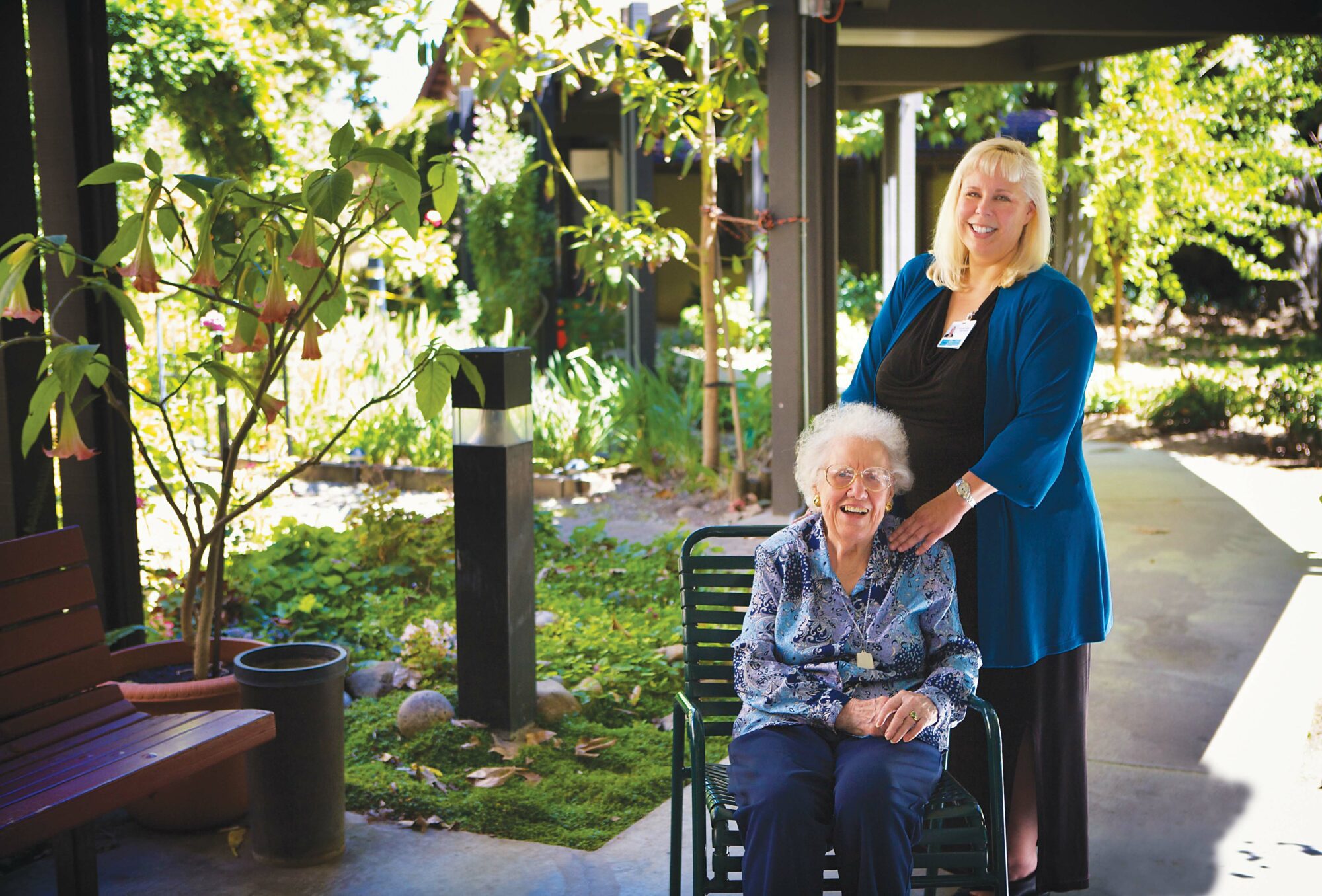
Michael’s case is in some ways atypical, but not unusual for MOS. Even though it had been years since Michael last engaged with his lodge, and although he was living more than 3,000 miles away, the fraternity had an obligation to him—and to doing whatever it took to ensure his well-being.
For Sabrina Montes, that’s the beauty of Masonic Outreach Services. As an extension of the Masonic Homes of California, MOS is the vehicle through which the organization provides relief to Masons and their families outside the retirement homes, no matter what their needs are. “MOS has no boundaries,” says Montes, the chief strategic officer of the Masonic Homes. “We go wherever we need to go.”
That makes MOS a social safety net that’s unlike almost any other—and one that too many Masons are unaware of.
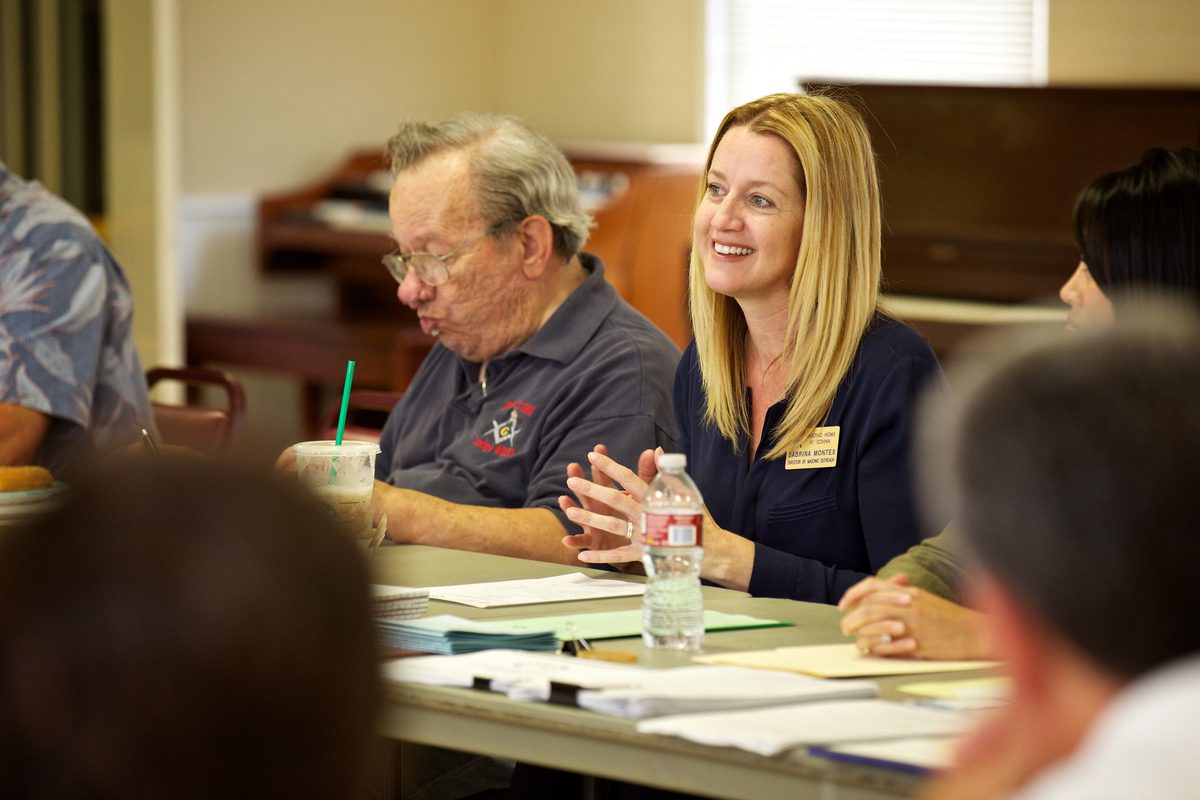
“I kind of like to think of it as a private retirement benefit you can fall back on,” says Amy Averweg, director of Masonic Senior and Family Outreach. “Folks come to us and often have no assets or are outliving their assets. We get to swoop in and help them in their hour of greatest need.”
Another care manager describes the program as a “magic wand” they get to wave over members’ and their families’ lives. “People are amazed when they finally call and learn what MOS can do for them,” they say.
It wasn’t always that way. For many years, the Masonic Homes set a small fund aside earmarked for nonresident assistance. That was used to support elderly members who were either on the wait list for entry to the Covina or Union City retirement homes, gravely ill or permanently disabled, or otherwise ineligible for entry.
But by the late 1980s, as the swell of members who’d joined as young men in the midcentury began approaching retirement age, it became clear that the Masonic Homes would need to find a way to expand beyond its physical footprint. In 1988, the first director of outreach services was appointed to help connect applicants to senior services close to their own home. “Not all those who are distressed and in need can and should be helped at the Masonic Homes,” wrote Roy Henville, the former president of the Masonic Homes’ board of trustees, in 1992. In many cases, “understanding the system and what’s out there and how to access it is the issue.”
Over the next several years, the new department began producing resource guides to connect applicants to in-home care, transportation, and services like Meals on Wheels. In other words, MOS was already zeroing in on the crucial elements that would define its approach to fraternal outreach: Information. Financial support. Lodge partners. “It was a really proactive approach,” Montes says. “In a way, it was a template of what was to come.”
In very short order, it became clear that MOS was the Masonic Homes’ best tool for caring for a rapidly graying membership. In 2003, the program served 100 clients—at a rate of about $75 per person per day. By 2004, the demand for MOS services rose by a third in just over four months. That year, the fraternity raised more than $650,000 for the program, and it became the centerpiece of the Masonic Homes’ five-year strategic plan.
As the recession and housing crash hit California, MOS expanded to offer its relief and services to younger members through a new Masonic Family Outreach Services program. In the wake of megafires in both Northern and Southern California, MOS emerged as the main point of contact for displaced members, connecting them with local service providers and emergency funds. It launched the Shared Housing program to provide low-cost opportunities for Masonic seniors able to live independently. And as the pandemic struck, it was MOS that served as stewards of the Distressed Worthy Brother Relief Fund.
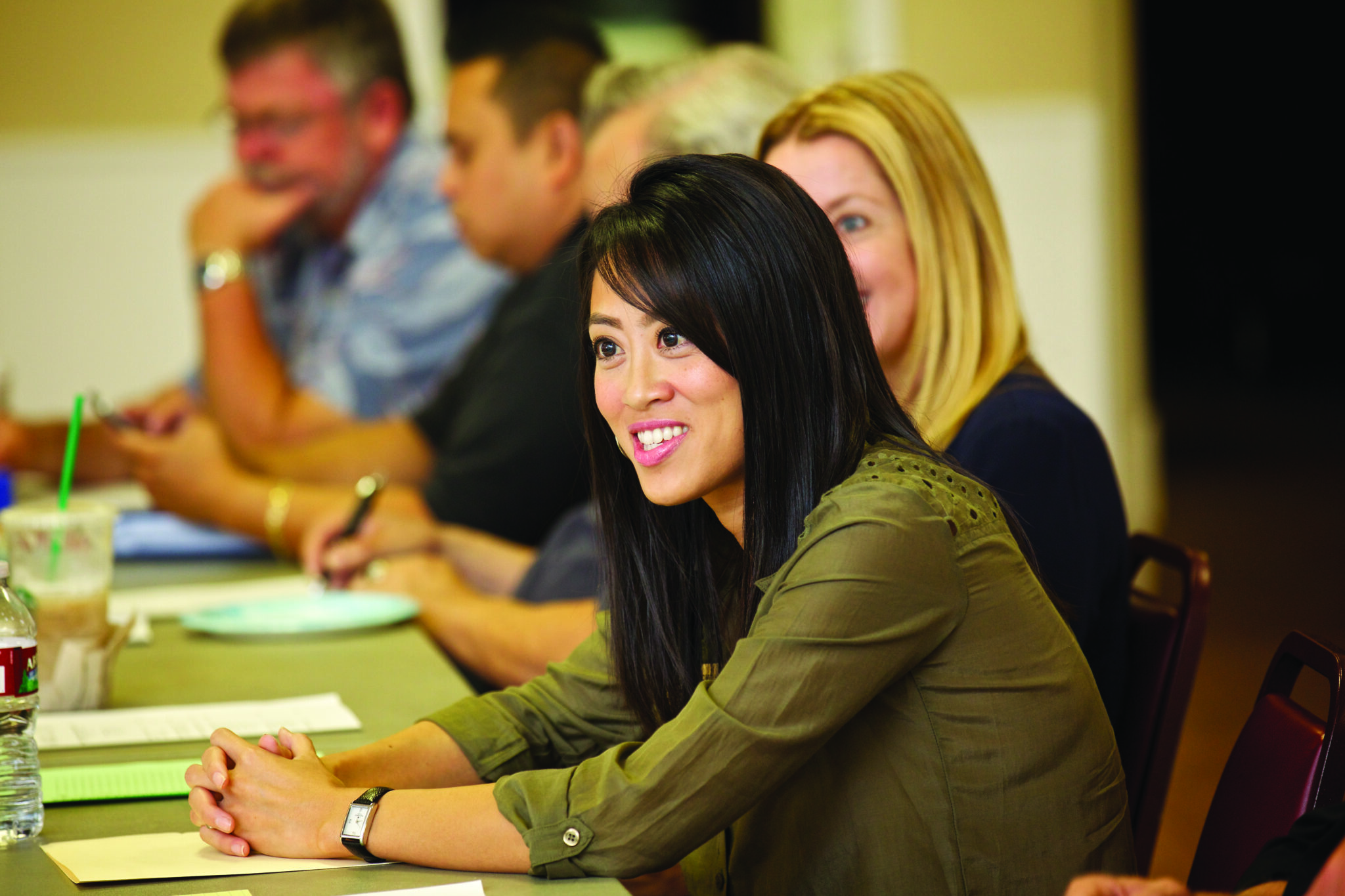
Throughout, the organization has relied on volunteers from local lodges to connect its care managers with members in need. That arrangement was formalized into the Lodge Outreach Program in 2012, through which MOS staff train Masons in the basics of social work. They in turn do the legwork of calling elderly members, the widows of deceased members, and others facing hard times. Then they hand them off to MOS staff, who devise care plans and arrange whatever services are needed. In recognition of the Mason who did the most to establish the program, MOS now bestows the Joe Jackson Award each year on the lodge that best exemplifies his commitment to caring for fellow members.
Today, MOS serves more than 500 clients per year—more than the combined population of the two Masonic Homes campuses—at a cost of about $3.5 million annually. Far from simply supplementing the “meager pensions or incomes” of seniors as they awaited entry into the Masonic Homes, as Henville wrote in 1990, MOS has grown into the main vehicle through which the organization delivers relief to its statewide membership. But its impact goes far beyond dollars and cents. For the people it touches, MOS provides a life-changing intervention. Sometimes all it takes is helping a member pay for a hotel after they’ve been evacuated from a fire zone. Or arranging unemployment benefits for them. Or paying for a training seminar so they can land a new job.
Other times, it means flying across the country just to help a lonely senior cancel his unwanted magazine subscriptions. That’s what Goldstein and Michael did on his last trip back east. “It’s life maintenance,” Goldstein says with a chuckle. And though Michael can be a little gruff at times, Goldstein says he shows his appreciation in his own way. “Whenever I get back, I always have a message from him making sure I made it and thanking me for everything,” he says.
Today, Michael is safe and adapting well to his new living arrangement. As a next step, Goldstein says he’s hopeful Michael can rebuild his relationship with his children, from whom he’s been largely estranged. But that’s all down the road. For now, it’s enough that Michael is able to look ahead and see a future for himself. Says Goldstein, “It’s always nice when we have a happy ending.”

RELIEF FOR CALIFORNIA MASONS AND THEIR FAMILIES
Contact us today to access your member benefits and services:
masonichome.org
(888) 466-3642
mcyaf.org
(877) 488-6293 (San Francisco)
(626) 251-2300 (Covina)
Another care manager describes the program as a “magic wand” they get to wave over members’ and their families’ lives. “People are amazed when they finally call and learn what MOS can do for them,” they say.
It wasn’t always that way. For many years, the Masonic Homes set a small fund aside earmarked for nonresident assistance. That was used to support elderly members who were either on the wait list for entry to the Covina or Union City retirement homes, gravely ill or permanently disabled, or otherwise ineligible for entry.
But by the late 1980s, as the swell of members who’d joined as young men in the midcentury began approaching retirement age, it became clear that the Masonic Homes would need to find a way to expand beyond its physical footprint. In 1988, the first director of outreach services was appointed to help connect applicants to senior services close to their own home. “Not all those who are distressed and in need can and should be helped at the Masonic Homes,” wrote Roy Henville, the former president of the Masonic Homes’ board of trustees, in 1992. In many cases, “understanding the system and what’s out there and how to access it is the issue.”
Over the next several years, the new department began producing resource guides to connect applicants to in-home care, transportation, and services like Meals on Wheels. In other words, MOS was already zeroing in on the crucial elements that would define its approach to fraternal outreach: Information. Financial support. Lodge partners. “It was a really proactive approach,” Montes says. “In a way, it was a template of what was to come.”
In very short order, it became clear that MOS was the Masonic Homes’ best tool for caring for a rapidly graying membership. In 2003, the program served 100 clients—at a rate of about $75 per person per day. By 2004, the demand for MOS services rose by a third in just over four months. That year, the fraternity raised more than $650,000 for the program, and it became the centerpiece of the Masonic Homes’ five-year strategic plan.
As the recession and housing crash hit California, MOS expanded to offer its relief and services to younger members through a new Masonic Family Outreach Services program. In the wake of megafires in both Northern and Southern California, MOS emerged as the main point of contact for displaced members, connecting them with local service providers and emergency funds. It launched the Shared Housing program to provide low-cost opportunities for Masonic seniors able to live independently. And as the pandemic struck, it was MOS that served as stewards of the Distressed Worthy Brother Relief Fund.
Throughout, the organization has relied on volunteers from local lodges to connect its care managers with members in need. That arrangement was formalized into the Lodge Outreach Program in 2012, through which MOS staff train Masons in the basics of social work. They in turn do the legwork of calling elderly members, the widows of deceased members, and others facing hard times. Then they hand them off to MOS staff, who devise care plans and arrange whatever services are needed. In recognition of the Mason who did the most to establish the program, MOS now bestows the Joe Jackson Award each year on the lodge that best exemplifies his commitment to caring for fellow members.
Today, MOS serves more than 500 clients per year—more than the combined population of the two Masonic Homes campuses—at a cost of about $3.5 million annually. Far from simply supplementing the “meager pensions or incomes” of seniors as they awaited entry into the Masonic Homes, as Henville wrote in 1990, MOS has grown into the main vehicle through which the organization delivers relief to its statewide membership. But its impact goes far beyond dollars and cents. For the people it touches, MOS provides a life-changing intervention. Sometimes all it takes is helping a member pay for a hotel after they’ve been evacuated from a fire zone. Or arranging unemployment benefits for them. Or paying for a training seminar so they can land a new job.
Other times, it means flying across the country just to help a lonely senior cancel his unwanted magazine subscriptions. That’s what Goldstein and Michael did on his last trip back east. “It’s life maintenance,” Goldstein says with a chuckle. And though Michael can be a little gruff at times, Goldstein says he shows his appreciation in his own way. “Whenever I get back, I always have a message from him making sure I made it and thanking me for everything,” he says.
Today, Michael is safe and adapting well to his new living arrangement. As a next step, Goldstein says he’s hopeful Michael can rebuild his relationship with his children, from whom he’s been largely estranged. But that’s all down the road. For now, it’s enough that Michael is able to look ahead and see a future for himself. Says Goldstein, “It’s always nice when we have a happy ending.”
More articles on Masonic Outreach Services:
Through Masonic Outreach Services, a Lifeline to Those in Need
In the Face of Fire, a Heroic Act of Masonic Relief
After a Freak Blizzard, Masonic Relief Meets the Snow Patrol in San Bernardino
Special Delivery: Masonic Outreach Expands to the Central Valley
Here for Masonic Seniors: Masonic Outreach Services Offers Support for No Cost
Outstanding in Outreach: How Beach Cities No. 753 Earned the Joe Jackson Award
For support and information about the Masonic Homes of California or Masonic Outreach Services,
call (888) 466-3642.
To volunteer with the Lodge Outreach Program,
call (888) 466-3642 or email lodgeoutreach@mhcuc.org
Above: Danilo Manalansan and John Parcher in the Shared Housing residence in Covina. The Shared Housing program is run through Masonic Outreach Services.

The Masonic Homes of California evolved from a 19th century widows and orphans home into an innovative apparatus of care and relief.

A driver at the Masonic Homes talks about joining the fraternity and giving back.
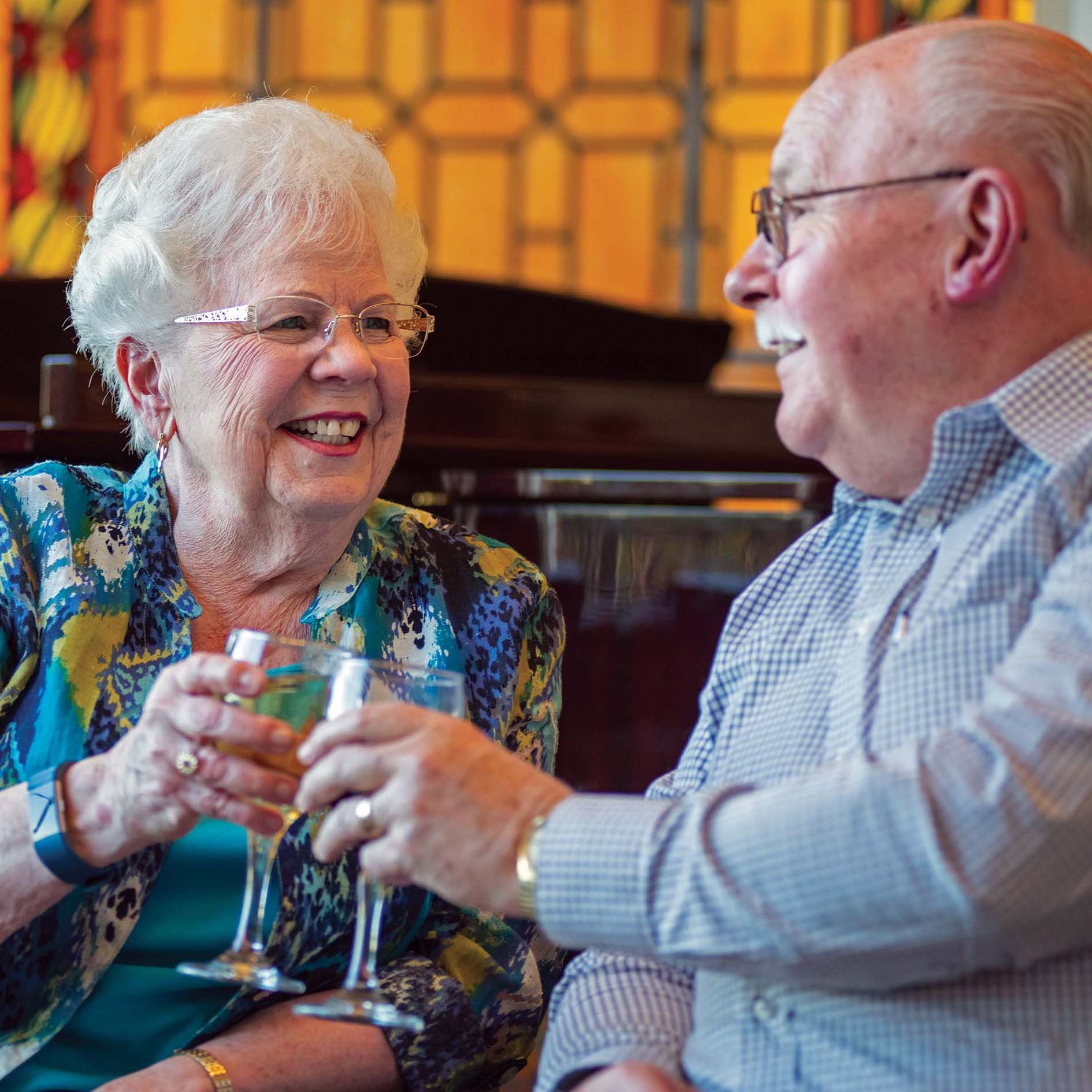
For seniors in retirement, as in the Masonic lodge, strong social connections are the secret to successful aging.